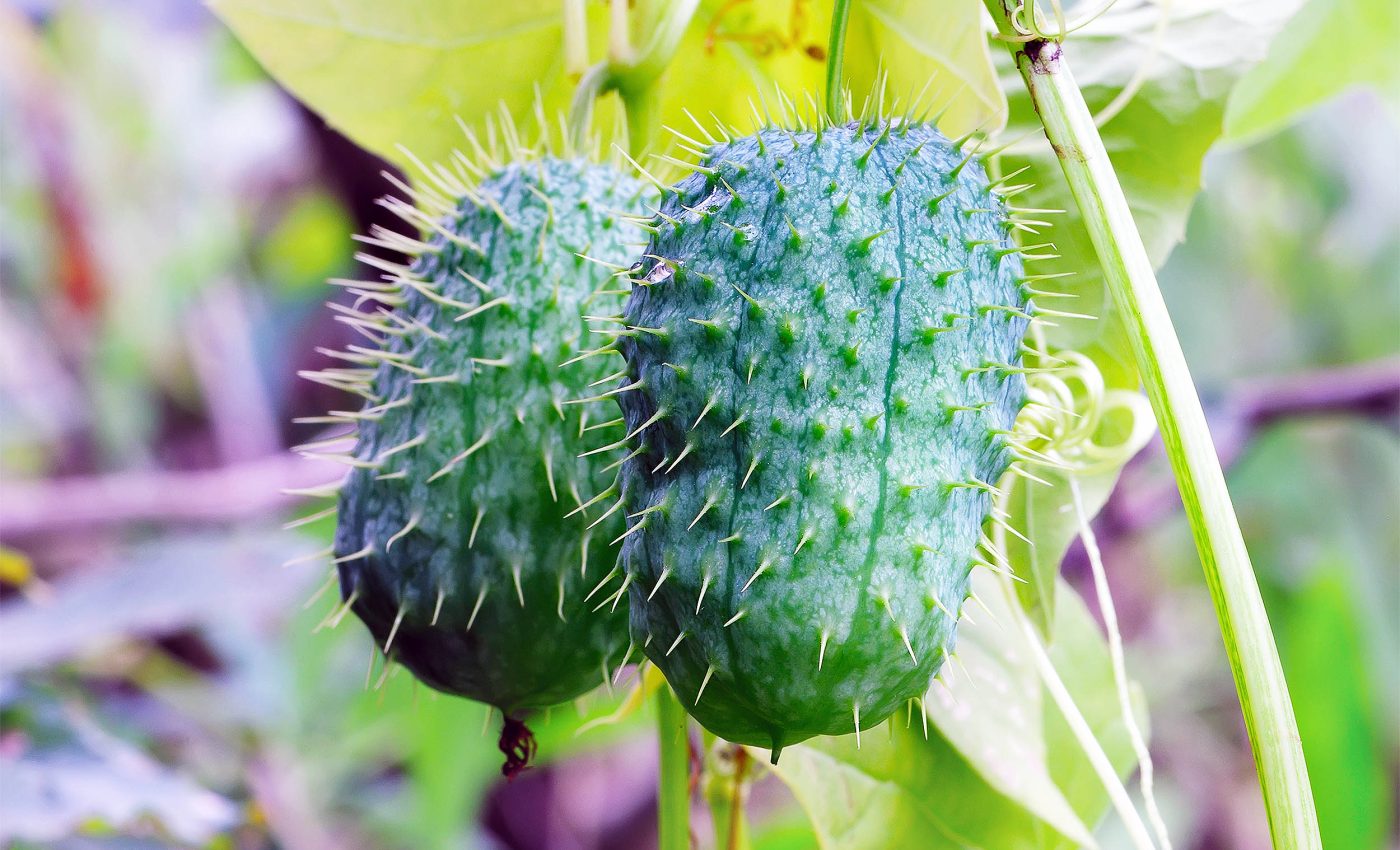
Scientists learn "squirting cucumbers" can actually aim their shots before exploding, watch how it works
When a ripe fruit of the Mediterranean squirting cucumber (Ecballium elaterium) finally bursts, the show is over in a blink – unless you film it at 10,000 frames per second.
A new study from the Department of Functional Morphology and Biomechanics at Kiel University, Germany, used precisely that technology along with high-resolution X-ray micro-tomography.
The research reveals how the plant primes itself for one of the most spectacular examples of self-propelled seed dispersal in the plant kingdom.
Why the squirting cucumber explodes
Plants that deposit seeds right beneath a parent’s canopy face stiff competition for light, water, and nutrients. Evolution favors strategies that spread offspring widely – by wind, animals, or, in rare cases, by brute force.
The squirting cucumber belongs to that small third category. Once its water-rich fruit has matured, internal pressure builds up. It then suddenly ejects a viscous jet containing up to 30 seeds, launching them away at startling speed.
“Many factors have to interact perfectly to disperse the seeds in the most efficient way, while not destroying the whole plant too early,” said project leader Helen Gorges, a PhD student at Kiel.
Untangling those factors was the goal of the research she presented this week at the Society for Experimental Biology annual meeting in Antwerp, Belgium.
Cucumber ripening mapped in 3D
The Kiel team began by scanning intact fruits with micro-computed tomography (micro-CT) to build three-dimensional models of the internal anatomy.
Progressive scans taken during ripening charted how the tissues transformed from a firm, green cylinder into a biological pressure vessel poised to rupture.
Complementary micro-CT imaging of exploded fruit captured the aftermath in equally fine detail. This allowed the researchers to calculate how tissues deformed and ruptured in the millisecond before detonation.
Parallel high-speed videography supplied the missing frames. “We recorded the explosion of the fruit with high-speed videos at 1,000 fps and 10,000 fps to calculate the speed of the seeds and the possible shooting distances,” Gorges said.
Those recordings showed individual cucumber seeds rocketing out of the ruptured end at up to 29 miles per hour (about 13 m/s) before gravity began to tug them earthward.
Fruit aims before exploding
Classical ballistics dictates that, for any projectile launched from ground level, an angle of 45° maximizes horizontal distance – assuming no air resistance.
Because seeds leave a height above ground and endure aerodynamic drag, the optimum tilt is a little steeper.
Field measurements revealed over the final days of ripening, the fruit’s short stalk gradually straightened until the fruit nodded at 53° relative to horizontal.
This angle is almost exactly the theoretical optimum of 50°, calculated for Ecballium’s seed mass and exit velocity.
“We also analyzed pictures during the ripening of the fruits to measure the curvature of the fruit stem and the angle between fruit and stem,” Gorges noted.
This revealed that the plant actively remodels its pedicel tissues so that when the moment comes, it fires each capsule along a near-perfect ballistic trajectory.
Cucumber seeds exit with precision
High-speed footage further showed that the seeds of the squirting cucumber depart in an orderly orientation, always exiting point-first from the fruit’s basal end. That consistency may reduce drag and help minimize collisions among seeds in the gushing stream.
Once they land, another adaptation takes over: the seed coat produces a mucilaginous hydrogel that becomes glue-like as it dries.
The sticky coating helps seeds adhere to soil particles, reducing the chance they will be washed away. It may also improve local moisture retention – both advantages for germination in the cucumber’s typically arid habitat.
Fruit as a pressure bomb
Internal pressure estimates derived from micro-CT density measurements confirm that the fruit behaves like a hydraulic accumulator.
Water drawn from the parent plant inflates internal cavities while secondary cell-wall thickening stiffens the outer rind.
When tension surpasses tissue strength, the weakest seam near the stalk splits like a pre-scored rupture disk. The accumulated pressure then drives the surrounding gel and embedded cucumber seeds through the opening in a fraction of a second.
“It’s super interesting to watch the explosions through high-speed recordings, as the explosions happen way too fast to see anything in real time,” Gorges said.
The 10,000 fps clips compress a chaotic spray into graceful arcs, letting the researchers trace individual seeds out to distances of 12 meters (39 feet) – an impressive range for an object smaller than a rice grain.
Inspiration for soft robotics
Translating nature’s launchers into human technology is a growing pursuit in soft robotics and medical engineering.
In the cucumber, the driving energy is stored in a water-rich gel, a concept that might underpin future hydrogel-based actuators for microsurgery or targeted drug delivery.
“There are also many applications in soft robotics, drug delivery systems, and similar devices, where energy-efficient launching systems are desired,” Gorges explained.
Mimicking the fruit’s composite rind or its self-sealing hydrogel could yield actuators that store elastic or hydraulic energy safely until a precise trigger releases it.
Nature’s launch system perfected
From stem straightening that fine-tunes launch angle to seed coatings that assist germination, Ecballium elaterium exemplifies how evolution can weave multiple traits into an integrated dispersal weapon.
By combining high-speed imaging with X-ray tomography, the Kiel group has mapped those traits from the cellular to the ecological scale. Their findings illuminate not just an evolutionary curiosity.
The researchers also offer a blueprint that engineers may soon tap to build miniature devices capable of their own rapid-fire feats.
—–
Like what you read? Subscribe to our newsletter for engaging articles, exclusive content, and the latest updates.
Check us out on EarthSnap, a free app brought to you by Eric Ralls and Earth.com.
—–













